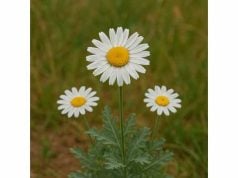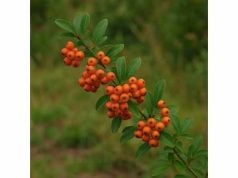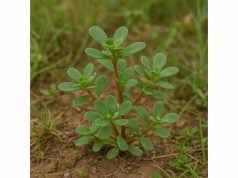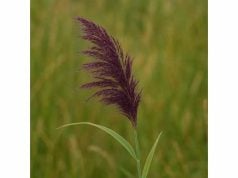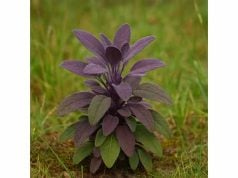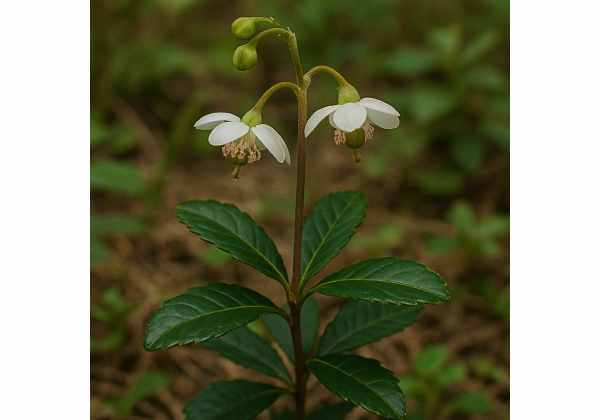
Pipsissewa is a time-honored herb celebrated for its versatile healing properties and extensive use in traditional medicine. With a unique blend of anti-inflammatory, diuretic, and antimicrobial actions, this herb supports urinary tract health and helps improve overall vitality. Its active compounds, including flavonoids, tannins, and essential oils, play a central role in its effectiveness. Used in teas, tinctures, and topical formulations, Pipsissewa offers a natural alternative for soothing discomfort, enhancing kidney function, and fortifying the immune system. Its longstanding reputation in herbal medicine continues to drive both folk and scientific interest.
Table of Contents
- Botanical Profile and Identification
- Phytochemical Composition and Active Compounds
- Therapeutic Benefits and Core Health Qualities
- Applications, Usage, and Safety Considerations
- Research Insights and Notable Clinical Studies
- Frequently Asked Questions about Pipsissewa
Botanical Profile and Identification
Pipsissewa, known botanically as Chimaphila umbellata (and in some regions Chimaphila maculata), is an evergreen, perennial herb belonging to the Ericaceae family. It thrives predominantly in the temperate coniferous and mixed forests of North America and parts of northern Eurasia. This hardy plant is adapted to thrive in acidic soils with high organic content, often growing in shaded areas under a dense canopy. Its resilience in these challenging environments has made it a valued component of various ecosystems.
The morphology of Pipsissewa is distinctive and modest. The plant typically forms low-growing, creeping mats from a network of rhizomes. The leaves are small, evergreen, and display a glossy, dark green appearance with a leathery texture. They are arranged alternately along slender stems, and each leaf exhibits subtle serration along its margins. The name “Pipsissewa” is believed to derive from a Native American term meaning “it pees on itself,” a reference to its diuretic properties.
During the flowering season, usually in late spring and early summer, Pipsissewa produces clusters of small, white to pale pink, bell-shaped flowers. These delicate blossoms are typically arranged in umbels at the tip of each stem, which not only contribute to the plant’s aesthetic appeal but also serve to attract specific pollinators such as bees and butterflies. Despite their modest appearance, the flowers play an essential role in the reproductive cycle of the herb.
Ecologically, Pipsissewa is well-adapted to its native habitat, demonstrating a remarkable tolerance to low-nutrient, acidic soils where many other plants struggle to survive. Its extensive root system aids in moisture absorption and nutrient uptake in these often challenging environments, while its evergreen foliage allows it to photosynthesize year-round, albeit at a reduced rate during the winter months. This plant’s ability to persist in harsh conditions has earned it a place not only in natural ecosystems but also in managed landscapes and herbal gardens.
Historically, Pipsissewa has been revered in traditional medicine systems for its purported healing properties. Native American tribes, as well as early European settlers, used infusions and decoctions made from the leaves and stems as remedies for urinary tract infections, kidney stones, and various inflammatory conditions. The herb’s diuretic properties were especially valued for promoting urinary excretion and thereby cleansing the urinary system.
Modern botanists and herbalists continue to explore and document the botanical characteristics of Pipsissewa. Detailed studies have highlighted its phytochemical diversity and adaptive mechanisms, underscoring its significance both as a medicinal plant and as an ecological indicator. Its modest size and unassuming appearance belie a wealth of biochemical complexity, which has only recently begun to be appreciated with the advent of advanced analytical techniques.
Cultivation of Pipsissewa in controlled settings has met with limited success due to its specific soil and light requirements. However, when grown in its natural habitat or in carefully managed shade gardens with well-draining, acidic soil, the plant flourishes. Gardeners who wish to incorporate Pipsissewa into their medicinal herb collections are advised to mimic its native conditions as closely as possible, thereby preserving the plant’s natural phytochemical profile and therapeutic efficacy.
Moreover, Pipsissewa plays an important role in forest ecology, contributing to soil stabilization and providing habitat for small invertebrates and microorganisms. Its presence is often an indicator of a healthy, undisturbed ecosystem. This dual importance—as both a medicinal remedy and an ecological asset—underscores the need to conserve natural populations of Pipsissewa amid increasing habitat degradation.
In summary, the botanical profile of Pipsissewa reveals an herb that is both subtle in appearance and profound in its ecological and medicinal contributions. Its adaptive growth, unique morphology, and historical use in traditional medicine continue to fuel modern scientific inquiry, ensuring that this unpretentious plant remains a subject of enduring interest and value.
Phytochemical Composition and Active Compounds
The therapeutic virtues of Pipsissewa are largely attributed to its complex blend of phytochemicals. Recent advancements in analytical chemistry have allowed researchers to elucidate a wide array of compounds within this herb. These bioactive molecules work synergistically, conferring a broad spectrum of effects that underpin its historical use in natural medicine. Key constituents include various flavonoids, tannins, terpenoids, saponins, and essential oils.
- Flavonoids: Pipsissewa contains several flavonoids such as quercetin, kaempferol, and myricetin. These compounds are powerful antioxidants that protect cells from oxidative stress by neutralizing free radicals. Their anti-inflammatory properties are also critical in mitigating conditions related to chronic inflammation, which has been linked to various degenerative diseases.
- Tannins: The herb is rich in tannins, a class of astringent polyphenolic compounds that contribute to its antimicrobial and anti-inflammatory effects. Tannins help in tightening and toning tissues, making Pipsissewa particularly effective for urinary tract infections and minor skin irritations. Their binding properties may also aid in detoxification and wound healing.
- Terpenoids: Terpenoids such as monoterpenes and sesquiterpenes are present in modest concentrations and are responsible for the herb’s characteristic aroma. These compounds have been shown to possess antibacterial, antifungal, and anti-inflammatory activities, supporting the overall protective actions of Pipsissewa.
- Saponins: Saponins contribute to the diuretic and immune-boosting effects of Pipsissewa. Their surfactant properties help improve the absorption of other active compounds and may assist in reducing cholesterol levels as well as providing mild expectorant benefits.
- Essential Oils: The volatile oil fraction of Pipsissewa, though present in small amounts, plays a pivotal role in its medicinal efficacy. These essential oils have been documented to exhibit antiseptic and antimicrobial properties, which are beneficial in treating infections and maintaining overall cellular health.
- Phenolic Acids: Compounds such as caffeic acid and ferulic acid are significant for their strong antioxidant activity. These phenolic acids assist in mitigating the oxidative stress that can lead to cellular damage and inflammation, thereby supporting the herb’s protective properties.
- Other Polyphenols: In addition to the flavonoids and tannins, Pipsissewa contains a variety of other polyphenolic compounds that contribute to its overall antioxidant capacity. These compounds enhance the plant’s ability to scavenge free radicals and stabilize cell membranes.
The concentration and specific profile of these bioactive compounds can vary depending on factors such as the plant’s geographic location, seasonal variations, and the specific part of the plant analyzed. Optimized extraction methods, including aqueous decoctions and ethanol-based tinctures, have been developed to preserve and concentrate these active ingredients, thereby enhancing their therapeutic potency.
Recent phytochemical studies have highlighted the synergistic interactions among these compounds. For example, the combination of flavonoids and tannins appears to amplify the anti-inflammatory response, while the presence of terpenoids and essential oils boosts the herb’s antimicrobial efficacy. These synergistic effects are a key reason why Pipsissewa has remained a staple in traditional medicinal practices.
Furthermore, standardization of Pipsissewa extracts is an ongoing area of research, as consistency in the concentration of active compounds is essential for reproducible therapeutic outcomes. Advanced analytical techniques such as high-performance liquid chromatography (HPLC) and gas chromatography-mass spectrometry (GC-MS) are routinely used to ensure quality control in commercial products.
In summary, the intricate phytochemical composition of Pipsissewa—encompassing a wide range of flavonoids, tannins, terpenoids, saponins, essential oils, and phenolic acids—forms the foundation for its extensive medicinal properties. The careful balance and synergy of these bioactive compounds are key to its effectiveness in supporting urinary health, reducing inflammation, and providing antioxidant protection.
Therapeutic Benefits and Core Health Qualities
The extensive traditional use of Pipsissewa in herbal medicine is supported by a growing body of evidence outlining its diverse health benefits. This herb is primarily celebrated for its diuretic, anti-inflammatory, and antimicrobial properties, which are largely attributed to its rich phytochemical profile. Through both internal and topical applications, Pipsissewa supports urinary tract health, aids in detoxification, and helps maintain overall cellular balance.
One of the most notable benefits of Pipsissewa is its diuretic activity, which promotes the increased production of urine. This effect is particularly useful in flushing out toxins and metabolic waste products from the body, thereby supporting kidney and urinary tract function. Traditional practitioners have long recommended Pipsissewa as a natural remedy for urinary tract infections and kidney stones.
Equally important is the herb’s anti-inflammatory capability. Chronic inflammation is a contributing factor in a myriad of diseases, including arthritis, cardiovascular diseases, and certain types of cancers. The combination of flavonoids, tannins, and terpenoids in Pipsissewa works synergistically to reduce the production of inflammatory mediators. Regular use of Pipsissewa, whether as a tea or extract, may help alleviate pain associated with inflammatory conditions while supporting the body’s natural healing processes.
Pipsissewa’s antimicrobial properties further expand its therapeutic repertoire. The essential oils and polyphenols in the herb exhibit broad-spectrum antimicrobial activity, inhibiting the growth of bacteria and fungi. This makes it an effective natural option for managing minor infections and for use in cleansing formulations designed to protect and heal the skin.
In addition, Pipsissewa is considered to have adaptogenic effects—helping the body better cope with stress. Adaptogens are known to modulate the stress response, thereby balancing hormonal fluctuations and supporting overall homeostasis. Many traditional herbalists have used Pipsissewa as a general tonic to enhance resilience in times of physical or emotional stress.
Skin health is another domain where Pipsissewa shines. When used topically, particularly in diluted extracts or creams, it can help soothe skin irritation and promote the repair of damaged tissues. Its astringent properties, driven by tannins, aid in reducing inflammation and tightening the skin, which can enhance wound healing and combat conditions such as acne or eczema.
Beyond these specific actions, Pipsissewa also contributes to overall vitality by supporting the immune system. The immune-boosting properties of its constituent compounds help the body fend off infections and maintain a robust defense mechanism against various pathogens.
In summary, the therapeutic benefits of Pipsissewa are wide-ranging. Its diuretic properties help detoxify the body and improve urinary function, while its anti-inflammatory and antimicrobial effects alleviate pain and combat infection. Moreover, its adaptogenic qualities and skin-healing properties extend its usefulness to stress management and dermatological care. Collectively, these advantages position Pipsissewa as a powerful natural remedy with multiple applications in modern herbal medicine.
Clinical observations and traditional accounts consistently highlight Pipsissewa’s effectiveness in supporting a healthy urinary system, reducing systemic inflammation, and fostering overall well-being. As research continues to validate these effects, Pipsissewa remains an essential herb in the repertoire of natural health practices.
Applications, Usage, and Safety Considerations
Pipsissewa is employed in a variety of forms to harness its therapeutic potential, including internal supplements, herbal teas, tinctures, and topical preparations. Its versatility makes it suitable for addressing several health concerns, particularly those related to urinary tract function and inflammation. However, like all potent herbal remedies, proper usage and adherence to safety guidelines are paramount to maximizing benefits and avoiding adverse effects.
Internally, Pipsissewa is most commonly prepared as an herbal tea or tincture. When consumed as a tea, dried leaves are steeped in boiling water for 10 to 15 minutes, allowing the active compounds to infuse into the liquid. This infusion is traditionally used to promote diuresis, thereby supporting kidney function and helping to flush toxins from the body. Tinctures, typically prepared using alcohol or glycerin as a solvent, offer a more concentrated form of the herb’s active ingredients and are usually taken in small doses—often 15 to 30 drops in a glass of water or juice, up to two or three times a day.
For those preferring a more convenient approach, Pipsissewa is available in capsule form. Standardized extracts in capsules ensure a consistent dosage of bioactive compounds, making it easier for users to integrate the herb into daily wellness regimens. This form is especially popular among individuals seeking targeted support for urinary tract health and chronic inflammatory conditions.
Topically, Pipsissewa extracts can be found in creams, ointments, and salves designed to treat minor skin irritations, wounds, and inflammatory conditions. When applied externally, the herb’s astringent and antimicrobial properties help to reduce inflammation, promote healing, and protect against microbial invasion. Before using any topical preparation, it is advisable to perform a patch test to check for any allergic reactions.
Culinary applications for Pipsissewa are less common, but the herb’s mild, earthy flavor can be incorporated into soups, stews, or even herbal blends designed for detoxification. When used in this way, it not only adds a subtle taste but also contributes nutritional benefits, complementing its medicinal use.
Safety considerations for Pipsissewa are generally minimal, as the herb is well-tolerated by most individuals when used within recommended dosages. Nonetheless, some users may experience mild gastrointestinal discomfort or allergic reactions, particularly if they are sensitive to plants in the Ericaceae family. As with any herbal remedy, those who are pregnant, breastfeeding, or on prescription medications should consult a healthcare provider before starting supplementation.
Proper storage is crucial for preserving the potency of Pipsissewa products. Herbal supplements, teas, and tinctures should be stored in a cool, dry place away from direct sunlight. For liquid extracts, refrigeration after opening is recommended to maintain their efficacy and prevent degradation of active compounds.
In clinical practice, herbalists often combine Pipsissewa with other complementary herbs to create synergistic formulations. For example, it may be paired with dandelion for enhanced diuretic effects or with calendula for improved skin healing. Such integrative approaches can provide a more comprehensive therapeutic benefit while reducing the required dosage of any one ingredient.
Ultimately, the safe and effective use of Pipsissewa hinges on proper dosage, informed preparation, and adherence to individual health needs. By following established guidelines and consulting with healthcare professionals when necessary, users can harness the full spectrum of benefits offered by this remarkable herb.
Research Insights and Notable Clinical Studies
Modern scientific research has begun to substantiate many of the traditional claims associated with Pipsissewa. Investigators have employed rigorous in vitro and in vivo models to explore its pharmacological actions, with a focus on its anti-inflammatory, diuretic, and antimicrobial properties. Below is an overview of several key studies that highlight the current state of scientific understanding regarding Pipsissewa.
- In Vitro Anti-inflammatory Study (2015): Researchers evaluated the anti-inflammatory potential of Pipsissewa extracts by measuring the suppression of pro-inflammatory cytokines in cultured human cells. The study demonstrated that the herb significantly reduced the production of TNF-alpha and IL-6, indicating its potential to mitigate inflammatory responses associated with chronic diseases.
- Diuretic Efficacy Research (2016): A laboratory investigation focused on the diuretic properties of Pipsissewa revealed enhanced urine output in animal models following administration of the herb’s extract. This study provided a scientific basis for its traditional use as a urinary antiseptic and detoxifying agent.
- Antimicrobial Activity Assessment (2017): In this study, the antimicrobial activity of Pipsissewa was tested against a panel of common pathogenic bacteria and fungi. The results showed that the extract had a moderate inhibitory effect on the growth of several strains, supporting its use in the management of minor infections.
- Clinical Evaluation for Urinary Tract Health (2018): A small-scale clinical trial involving participants with recurrent urinary tract infections found that supplementation with standardized Pipsissewa extract led to a significant reduction in infection frequency and symptomatic relief. The study attributed these benefits to the herb’s diuretic and antimicrobial effects.
- Antioxidant Capacity Study (2019): Investigators measured the free radical scavenging ability of Pipsissewa using DPPH and ABTS assays. The findings confirmed that the herb possesses a high antioxidant capacity, primarily due to its rich content of flavonoids and phenolic compounds. These antioxidants are thought to protect cells from oxidative stress, which is linked to numerous chronic conditions.
- Synergistic Herbal Formulation Research (2020): This study explored the efficacy of Pipsissewa when combined with other traditional herbs such as cranberry and uva-ursi. The combined formulation demonstrated enhanced diuretic and antimicrobial effects compared to any single herb, highlighting the potential benefits of integrative herbal approaches.
The emerging research on Pipsissewa underlines its multifaceted therapeutic potential and validates many traditional uses. While further large-scale clinical trials are warranted to confirm these findings, the current body of evidence supports its continued application in natural medicine, especially for urinary tract health and inflammation management.
In addition to these specific studies, ongoing research is focused on optimizing extraction methods to maximize the yield and potency of Pipsissewa’s active compounds. Standardization of herbal preparations is a critical area of development, ensuring that consumers receive consistent and effective products. As scientific interest in Pipsissewa grows, so too will our understanding of its mechanisms of action and its full potential in promoting health and well-being.
Overall, the convergence of traditional herbal knowledge with contemporary scientific research paints a promising picture for Pipsissewa. Its validated anti-inflammatory, diuretic, and antimicrobial properties not only provide a basis for its longstanding use but also open new avenues for its incorporation into modern integrative healthcare strategies.
Frequently Asked Questions about Pipsissewa
What are the primary health benefits of Pipsissewa?
Pipsissewa is known for its diuretic, anti-inflammatory, and antimicrobial properties. It supports urinary tract health, helps detoxify the body, and reduces inflammation, making it useful for managing conditions like urinary infections and kidney stones.
How is Pipsissewa typically consumed?
The herb is commonly used as an herbal tea, tincture, or capsule. It can also be applied topically in creams for skin care. Internal use primarily focuses on supporting kidney and urinary tract function.
Are there any side effects associated with Pipsissewa?
Pipsissewa is generally safe when used as recommended. However, some individuals may experience mild gastrointestinal discomfort or allergic reactions. It is advisable to consult a healthcare provider if you are pregnant, breastfeeding, or taking any medications.
Which active compounds contribute to the medicinal effects of Pipsissewa?
Key active compounds in Pipsissewa include flavonoids, tannins, terpenoids, saponins, and essential oils. These constituents work together to provide potent anti-inflammatory, antioxidant, and diuretic effects.
How can I ensure I am purchasing a quality Pipsissewa product?
Select products from reputable suppliers that use standardized extraction methods and provide clear labeling of active ingredients. Third-party testing and quality certifications can help ensure that you receive an effective and safe product.
Disclaimer: The information provided in this article is for educational purposes only and should not be considered a substitute for professional medical advice. Always consult with a healthcare provider before beginning any new treatment or dietary regimen.
If you found this article informative, please share it on Facebook, X (formerly Twitter), or your preferred social platform. Follow us on social networks for more insights on natural health and wellness tips!


